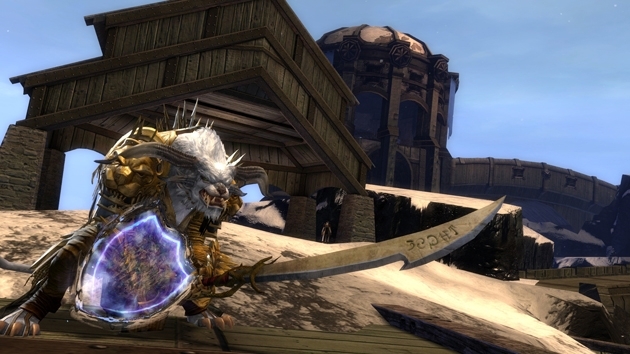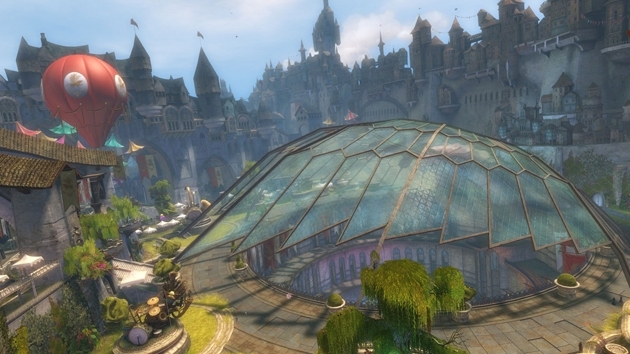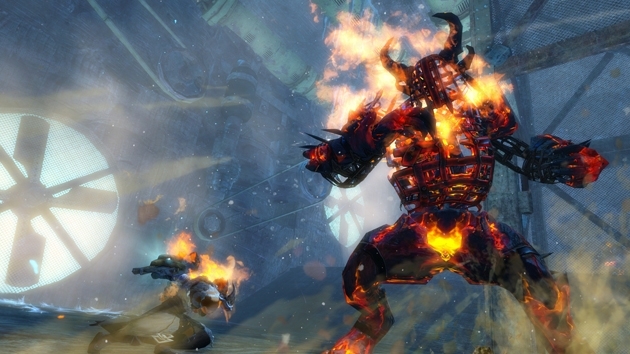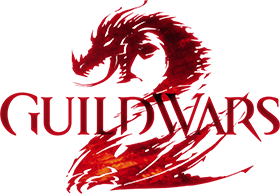Guild Wars 2: The Cadence Puzzle
How does ArenaNet manage to deliver updates every two weeks? We ask Matt Wuerffel, Isaiah Cartwright and Daniel Dociu for their secrets.

Back in early July, ArenaNet announced the unthinkable – Guild Wars 2 would be updated every two weeks. This wouldn’t be a barrage of random content either; with game designer Colin Johanson explaining that the team wants to deliver a truly living world.
Since then, the Seattle-based studio has been good to its word. Story updates featuring in-game elections and jubilee celebrations have arrived alongside new features like the currency wallet. But, in order to work at such a high speed, ArenaNet has needed to radically reorganize itself.
Two months into the Living Story mission, Talk Azeroth host Olivia Grace and I caught up with lead game designer Isiah Cartwright, art director Daniel Dociu and game designer Matt Wuerffel, and asked them how – and more importantly why – they switched to this approach.
There are two theories of what drives MMO engagement. The first – being able to play with friends and build strong social ties – is arguably something that Guild Wars 2 is already good at, with server guesting and slick transfer tools. The second one – providing regular content updates – is something that western top-tier games have historically struggled with. Dociu hopes that, by switching to 2-week updates, the game will continue to be successful.
“Obviously, we want to sustain the high level of interest that the fan base has, we don’t want their level of involvement and engagement with the game to drop. We figured that, by releasing content of high quality at an increased rate, we would be able to not just maintain the current number of players, but hopefully attract more.”

The Analytics-driven ArenaNet
Before ArenaNet could start producing updates every two weeks, it completely restructured the company. According to Dociu, part of that was “completely rethinking the way we develop content,” adding that “everything, from the very creative end of the process, through actual production and the way we test and market, has changed.”
The entire development team was broken down into more than seventeen smaller groups focused on a particular area of the game. Central to these are four Living World teams, each of them working on a four month delivery cycle, leapfrogging each other to deliver regular content updates and propel the ongoing story. The overall story is planned out a year in advance to contain the ebb and flow of narrative pacing, with Cartwright adding that “the two week cadence has become almost its own game type.”
After a while, game designers develop a sense of what types of content will work well and when to release it, based on both intuition and experience. As part of the switch to the Living World format, ArenaNet also ramped up its ability to capture data on playing habits, mining it for information on what content players particularly enjoyed. Dociu explained just how big a change this was.
“The most fundamental shift in development culture has been the transition from a culture of developing based on feedback through the community channels, to a development decision-making process based on analytics and data analysis.
“Our analytics team has grown a lot, and we’re more and more capable of splitting hairs and figuring out how people play, why they play the way they do, an increasingly granular level of detail. And that gives us the scientific backup to validate some of our instincts.
“We might need an important moment – a high – this month, and then allow for a bit of a breather. And then we can, based on the information the information we gathered through data analysis, pull from the huge bank of ideas that we have sitting on the back burner and figure out which particular type of content would suit this particular functionality.”
Do they help to set the pace for the story? Dociu seems to think so. “Increasingly so. It’s becoming more and more of a factor in not necessarily driving design, but validating and confirming our decisions and instincts.”
An update every two weeks sounds like a great deal for the dedicated Guild Wars 2 player, but I was concerned that the whirlwind pace of change might put off more laid-back gamers or those thinking of returning. Cartwright felt that the current pacing is a good fit for both ArenaNet and the players, but also pointed to analytics as the ultimate judge.
“I think we’re going to hit the right pace over time, of just doing it over and over, and figuring out what the players want. We’re always looking at how all the content that we build is played, looking at the analytics, design and taking a very scientific approach to seeing what was liked, what wasn’t, and what we need to improve.”

From Features to Creatures
Outside of the Living World teams, a bunch of other groups are focused on particular aspects of Guild Wars 2, delivering particular features or continual improvements to certain facets of the game. According to Cartwright, sometimes a project will start up, “take on a life of its own”, and fit into a future update down the road.
“We determine what the most important thing is for us to be working on at the time. They then slot themselves into releases, and that gives us the opportunity - if a feature isn’t up to the par that we want, and we want to take a little bit more time - to move it around a little bit if we need to, because the living world cadence is there. It gives us the opportunity to develop the way we like to develop, where we can push something back and improve its own quality if we need to.”
One of my early complaints about Guild Wars 2 was the terrible performance in mass combat. An early event named Lost Shores brought mass-combat misery to a substantial number of players. It’s a message that ArenaNet has since taken to heart, addressing performance issues across the board.
In particular, the Skills and Balance team has been spending much of its time going through all of the skills and looking for ways to get the same results more efficiently. Alongside improvements from the Engine team, Wuerffel explained that they’ve managed to get to the stage where they could turn off player culling in PvE, making cities instantly look much busier.
“We went through and cleaned up a bunch of old skills. Meteor Shower was one of them that had originally been scripted in a very…”
Dociu piped up: “Wasteful?”
Wuerffel continued, chuckling. “Wasteful way is one way of putting it. Ridiculously wasteful is another. And so it’s finding outliers like that and cleaning them up, and having a systematic approach to looking at how our buff system works, and making some changes to the code in there and cleaning things up, making things more efficient and less drain on the servers.”
More often though, the team is getting better at spotting performance issues before they reach the players. Cartwright explained to me how they now have tools to help spot inefficiencies, whether it’s maps, props, skills or creatures. That even extends to how the team approaches large in-game encounters to try and avoid those PC-crippling moments.
“Even this last one [Clockwork Chaos], we took the whole company down for a whole day, got everyone in on one map and did a lot of testing. Find an issue, change it, do it again. Some of these methodologies we’ve developed as we’ve been doing these different cadences, and this is how we safeguard making sure that the experience and quality is very high.”




